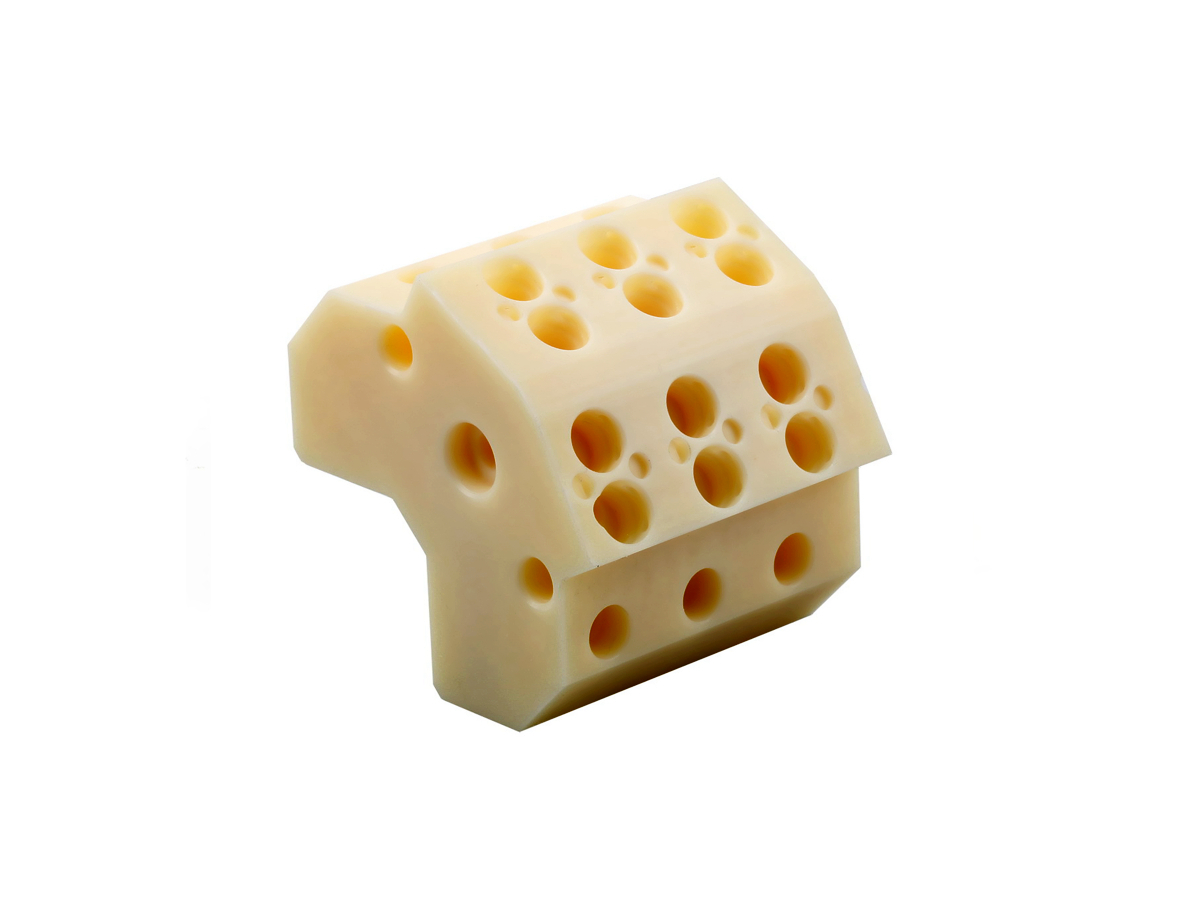CNC Machining of Ceramic Prototypes for Precision Parts in Harsh Environments
Introduction
Ceramic materials are uniquely suited to precision components operating under extreme conditions due to their exceptional hardness, thermal stability, chemical inertness, and electrical insulation properties. Industries such as aerospace, power generation, and oil and gas increasingly rely on ceramics for critical prototypes, benefiting from CNC machining’s tight tolerances (±0.005 mm) and accurate geometric control.
Leveraging advanced ceramic CNC machining, engineers can rapidly produce prototypes that withstand harsh operating environments, significantly reducing development times and ensuring high-performance outcomes.
Ceramic Material Properties
Material Performance Comparison Table
Material | Hardness (HV) | Compressive Strength (MPa) | Thermal Conductivity (W/m·K) | Max Operating Temp (°C) | Applications | Advantages |
|---|---|---|---|---|---|---|
1500-1700 | 2000-3500 | 20-30 | 1700 | Electrical insulators, wear-resistant parts | High hardness, electrical insulation | |
1200-1400 | 1500-2000 | 2-3 | 1200 | Cutting tools, medical devices | High toughness, fracture resistance | |
1400-1600 | 2500-3000 | 15-30 | 1400 | Turbine blades, bearings | Excellent thermal shock resistance, strength | |
2500-2800 | 2800-4000 | 100-130 | 1600 | High-temperature components, semiconductor parts | Superior hardness, thermal conductivity |
Material Selection Strategy
Selecting the optimal ceramic for CNC prototypes depends on specific operational demands such as thermal stability, mechanical strength, and environmental resilience:
Alumina (Al₂O₃): Preferred for electrical insulators or wear-resistant prototypes due to high hardness (up to 1700 HV) and excellent electrical insulation (≥10¹² Ω·cm resistivity).
Zirconia (ZrO₂): Chosen for applications requiring superior fracture toughness (up to 10 MPa·m½) and moderate hardness, ideal for cutting tools and biomedical prototypes.
Silicon Nitride (Si₃N₄): Ideal for structural parts exposed to extreme thermal cycling due to high thermal shock resistance and strength (compressive strength up to 3000 MPa).
Silicon Carbide (SiC): Best for prototypes demanding maximum hardness (2800 HV) and high thermal conductivity (130 W/m·K), ideal for semiconductor equipment or high-heat components.
CNC Machining Techniques for Ceramic Prototypes
CNC Machining Process Comparison
CNC Process | Accuracy (mm) | Surface Finish (Ra µm) | Applications | Advantages |
|---|---|---|---|---|
±0.002 | 0.05-0.2 | Precision components, optical parts | Exceptional dimensional control, smooth surface | |
±0.01 | 0.4-0.8 | Structural ceramics, custom shapes | Versatile geometry capability | |
±0.01 | 0.6-1.2 | Precision holes, fluid channels | Accurate hole placement | |
±0.005 | 0.2-0.4 | High-tolerance ceramic components | Tight tolerances, excellent repeatability |
CNC Process Selection Strategy
Choosing the appropriate CNC machining method for ceramic prototypes involves careful consideration of accuracy, surface integrity, and application requirements:
CNC Grinding (ISO 2768-1:f): Ideal for precision ceramic prototypes demanding ultra-high dimensional accuracy (±0.002 mm) and fine surface finishes (Ra ≤0.2 µm), suitable for optical or bearing surfaces.
CNC Milling (ISO 2768-1:m): Effectively shapes structural ceramic prototypes, providing moderate precision (±0.01 mm), suitable for complex custom geometries in mechanical parts or fixtures.
CNC Drilling (ISO 286-2:2010): Precisely forms internal features and holes with positional accuracy (±0.01 mm), essential for ceramic fluid-handling or insulation prototypes.
Precision Machining (ISO 2768-1:h): Ensures high precision and consistent repeatability (±0.005 mm) critical for high-performance mechanical or structural ceramic components.
Surface Treatments for Ceramic Prototypes
Surface Treatment Comparison
Treatment Method | Surface Roughness (Ra µm) | Chemical Resistance | Max Temp (°C) | Applications | Key Features |
|---|---|---|---|---|---|
≤0.05 | Excellent | Material limit | Optical ceramics, seal faces | Ultra-smooth surfaces, improved wear resistance | |
0.2-0.6 | Superior | 1500°C | Turbine blades, combustion chambers | Enhanced thermal protection | |
0.8-1.6 | Good | Material limit | Structural ceramics | Improved adhesion, surface uniformity | |
0.1-0.4 | Superior | 1000°C | Semiconductor components, wear-resistant parts | Thin uniform coatings, chemical inertness |
Surface Treatment Selection Strategy
Surface treatments enhance the durability, functionality, and performance of ceramic prototypes:
Polishing: Critical for optical-grade prototypes, providing surface roughness ≤0.05 µm, essential for reduced friction and superior wear characteristics.
Thermal Barrier Coatings (TBC): Essential for ceramic prototypes in extreme temperature environments, improving heat resistance up to 1500°C, ideal for turbine and aerospace applications.
Sandblasting: Enhances surface adhesion and uniformity (Ra 0.8-1.6 µm), beneficial for structural ceramics needing reliable coating adherence or bonding surfaces.
Chemical Vapor Deposition (CVD): Provides ultra-thin, chemically inert coatings (0.1-0.4 µm), ideal for semiconductor and high-wear ceramic prototypes requiring surface protection.
Typical Prototyping Methods
Ceramic 3D Printing: Rapidly produces complex shapes with ±0.1 mm accuracy, ideal for early-stage design verification.
CNC Machining Prototyping: Achieves precise ceramic prototypes with ±0.005 mm accuracy for rigorous performance testing.
Rapid Molding Prototyping: Efficiently creates small prototype batches (±0.05 mm accuracy) for functional evaluation under real-world conditions.
Quality Assurance Procedures
Dimensional Inspection (ISO 10360-2): Ensures prototypes conform to tolerances of ±0.005 mm using high-precision CMM.
Surface Roughness Measurement (ISO 4287): Verifies surface finishes meet stringent specifications (Ra ≤0.05-0.2 µm).
Hardness and Strength Testing (ASTM C1327 & ASTM C1161): Assesses ceramic mechanical performance, validating hardness, compressive, and flexural strength.
Thermal Resistance Testing (ASTM C1525): Evaluates thermal stability and maximum operating temperatures.
Chemical Resistance Tests (ASTM C895): Confirms inertness against harsh chemicals and corrosive environments.
ISO 9001:2015 Certification: Maintains strict quality management and traceability standards throughout production.
Key Industry Applications
Aerospace turbine components
Semiconductor manufacturing
High-wear industrial components
Medical and biomedical devices
Related FAQs:
Why choose ceramics for CNC prototypes?
Which CNC processes are best for ceramic machining?
What surface treatments improve ceramic prototype performance?
How are ceramic prototypes quality-tested?
What industries use CNC machined ceramic prototypes?

